This minimally invasive form of liposuction is one of 2024's buzziest aesthetics trends—and I just tried it
What you might want to know about Airsculpt

Believe me, getting a form of liposuction wasn’t on my 2024 bingo card, and yet, just a couple of months ago I found myself getting Airsculpt. Although new to the UK, Airsculpt has been in the US for years and is a type of liposuction and body contouring that delivers permanent fat removal with significantly less downtime than traditional lipo. And while I never recommend buying into buzzy aesthetics trends (like last year's buccal fat removal trend, as an example), Airsculpt has interested me from the get-go.
But before we get the hows, whats and whys, I want to make sure we are crystal clear on a few things. Firstly, I want to address that I am very aware that we are all experiencing a 'thin is in' resurgence on social media at the moment—and I categorically reject this 'trend'. Although I will get into why I decided to opt for an Airsculpt treatment in more depth shortly, I want to assure you that 'thinness' has never been and will never be on my agenda. Secondly, as a beauty journalist, I'd like to caveat that I am offered lots of treatments and procedures that promise to turn me into a better version of myself—and I decline 99% of those offers. In my opinion, accepting and getting treatments that you aren't sure you want to begin with is how insecurities that didn't already exist are made. So I promise you this was something I was already considering. And, lastly, Airsculpt is, without a doubt, the most invasive cosmetic procedure I've had and will likely ever have—and I thought long and hard before going ahead.
Now that's out of the way, buckle up—here’s my entire Airsculpt experience from start to finish. Grab a cup of tea for this, it's a long one.
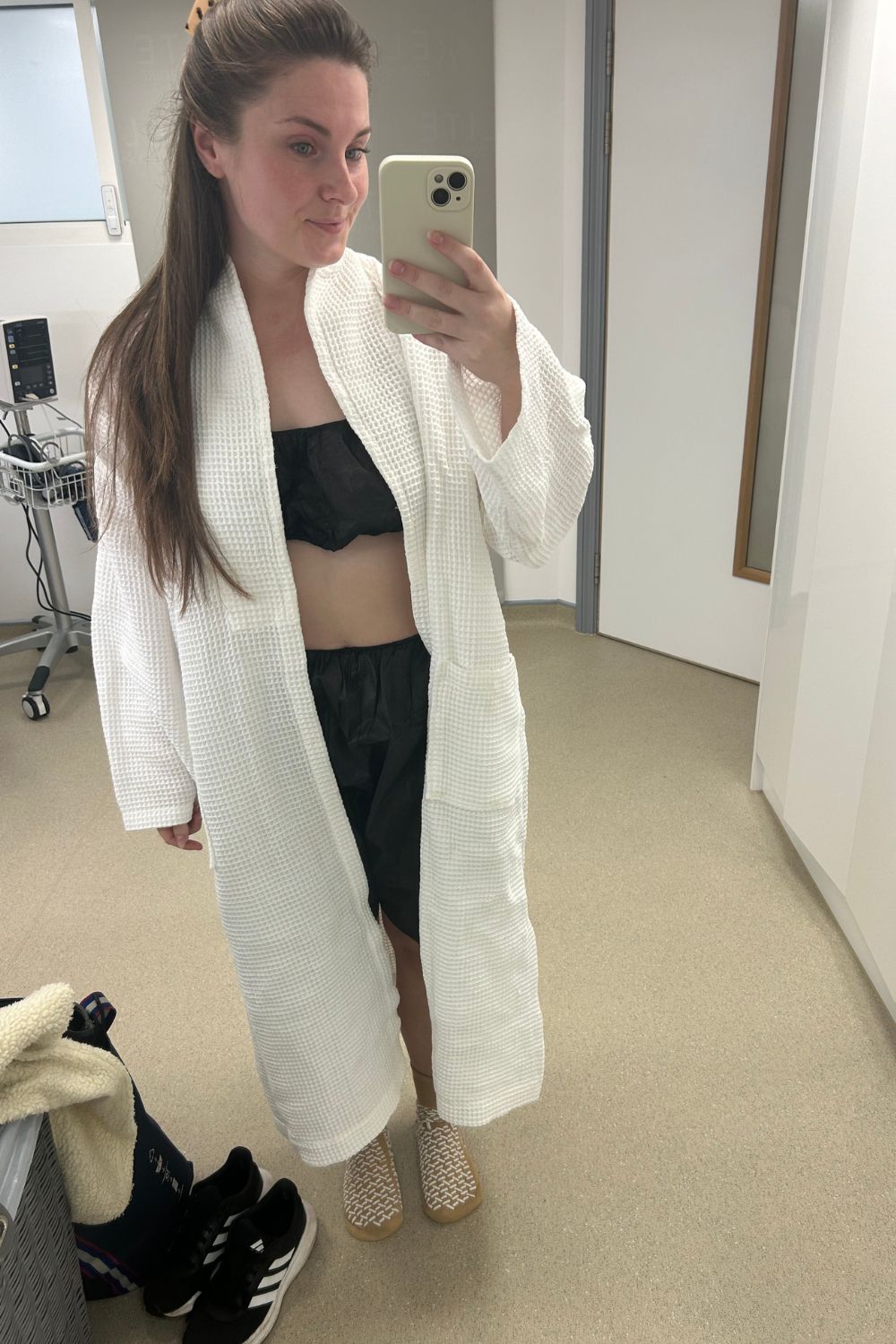
Why I chose to get Airsculpt
Before we get into it, I'd like to explain my reasoning for getting Airsculpt so please stay to read it. I think it’s as important, if not more important, than the results are.
I'm lucky that I grew up with role models who helped show me that my appearance is the least interesting thing about me. However, my arms have always been a frustration of mine. I consider myself an incredibly privileged person when it comes to my body for various reasons. Number one is that I am someone who has genetically never struggled with my weight or eating behaviours. I exercise a fair amount, but I don't have any underlying conditions that make it difficult for me to either lose or gain weight. Secondly, I also feel grateful that I understood how important exercise was for my body and brain at a young age. I exercised because I loved it, not because I felt like I had to. And in adult life, I have the means and time to exercise in a way that I enjoy.
So now that is cleared up, let me explain why I wanted Airsculpt. I have always had far bigger arms in proportion to the rest of my body—and that’s a fact. It has never been something that upset me or that I ever felt deeply insecure about, it just is what it is. I think the reason my arms have always seemed out of proportion comes down to a couple of things. One, I simply hold more fat in my arms than anywhere else on my body. And two, type of exercise I did throughout my childhood and teenage years didn't help. I was an Irish dancer and, if you're unfamiliar, we famously do not use our arms. That meant until my mid-20s, despite being incredibly fit, I'd never even considered doing arm workouts and so essentially had the arm strength of a newborn.
Following a few years of chronic illness with a number of surgeries and being completely unable to exercise, I felt like I'd totally lost my fitness. And the truth is, I had. Sometimes exercise isn't a priority in life and that's okay. After a successful surgery in April, I found myself, for the first time in years, feeling like my body could keep up with me. I decided to kickstart my proper fitness routine again. This meant walking at least an hour a day and going to the gym four or five times a week, with a mix of weights, circuits and yoga. Having spoken to numerous professionals, it was clear that no matter how much I worked out, my arms would remain unchanged. The problem with this is that the rest of my body was returning to what my ‘normal’ is and my arms didn’t match. Not only did I feel like it made my frame look uneven, but it also meant none of my clothes fit—at all. It was frustrating having clothes that I’d collected and thrifted for over the years not fit me due to something beyond my control.
Marie Claire Newsletter
Celebrity news, beauty, fashion advice, and fascinating features, delivered straight to your inbox!
So let me make this very, very clear: I did not go into my procedure with the desire to have 'thin' arms. My surgeon, Dr Omar Tillo was really transparent with me that if thinness was my goal, an arm lift would be the only way to go. What I really wanted was to remove a few extra inches from my arms to help them match the rest of my frame.
What is Airsculpt?
Airsculpt is essentially a minimally invasive liposuction procedure—created by plastic surgeon Dr Aaron Rollins—that permanently removes fat. It can be done on various parts of the body, including the arms, chin, stomach, back and more.
For arms, it uses three incision sites—either side of the elbow and just behind the armpit on the shoulder— with a small cannula to pluck the fat out of the area while the surgeon carefully moves the cannula around. It is performed while the patient is awake, which means far less downtime and fewer risks from anaesthesia. You can also opt for a fat transfer, but that wasn’t a goal of mine.
Dr Tillo managed my expectations within minutes of my consultation. I felt heard, validated and safe. This is essential for any procedure, invasive or not. I knew I was in good hands with him and the team.
Airsculpt risks
Before we carry on, it's very important to talk about the risks when it comes to cosmetic procedures like this. At the end of the day, Airsculpt is surgery, so should only be carried out by someone who is highly qualified and skilled. It is imperative that you do your research here.
As with any surgery of this kind, there are risks of pain, infection, swelling, bruising and numbness. There can also be a risk of lumps (which is why I opted to have regular lymphatic drainage to reduce my chances of this). A critical risk that needs to be addressed is that, whenever fat is removed from the body, there is always a risk of fat embolism (a complication most commonly associated with Brazilian butt lifts). Although a rarity, it can happen, so it's important to remember that just because Airsculpt isn't as invasive as traditional liposuction, it is still a serious procedure that carries risks.
What happens on the day?
Ahead of the day, I’d been for a consultation a few months before, then received a call a week before the procedure, as well as 24 hours before.
It was an early start for myself and my friend, Jodie, who agreed to be my chaperone for the day, catching the train ahead of my 8am arrival time at Elite Body Sculpture, which is arguably the most beautiful clinic on Harley Street. I was asked to eat a decent meal before arriving and made sure I’d drunk a lot of water.
I was greeted by Ellie, the wonderful patient care consultant at Airsculpt, who was there for a nice chat and gave me lots of paperwork to read through. I was then taken down to the pre-op room for vitals, measurements, photos, medication and to answer any questions I had. My two nurses, Celine and Dale, were brilliant too.
Then, Dr Tillo discussed the procedure once more, talked through aftercare and made sure I was happy with everything before marking me up. It wasn’t long before we were in the room and the team popped on the playlist they’d asked me to create a week prior. I was chatting away with the nurses before we began.
Before Airsculpt
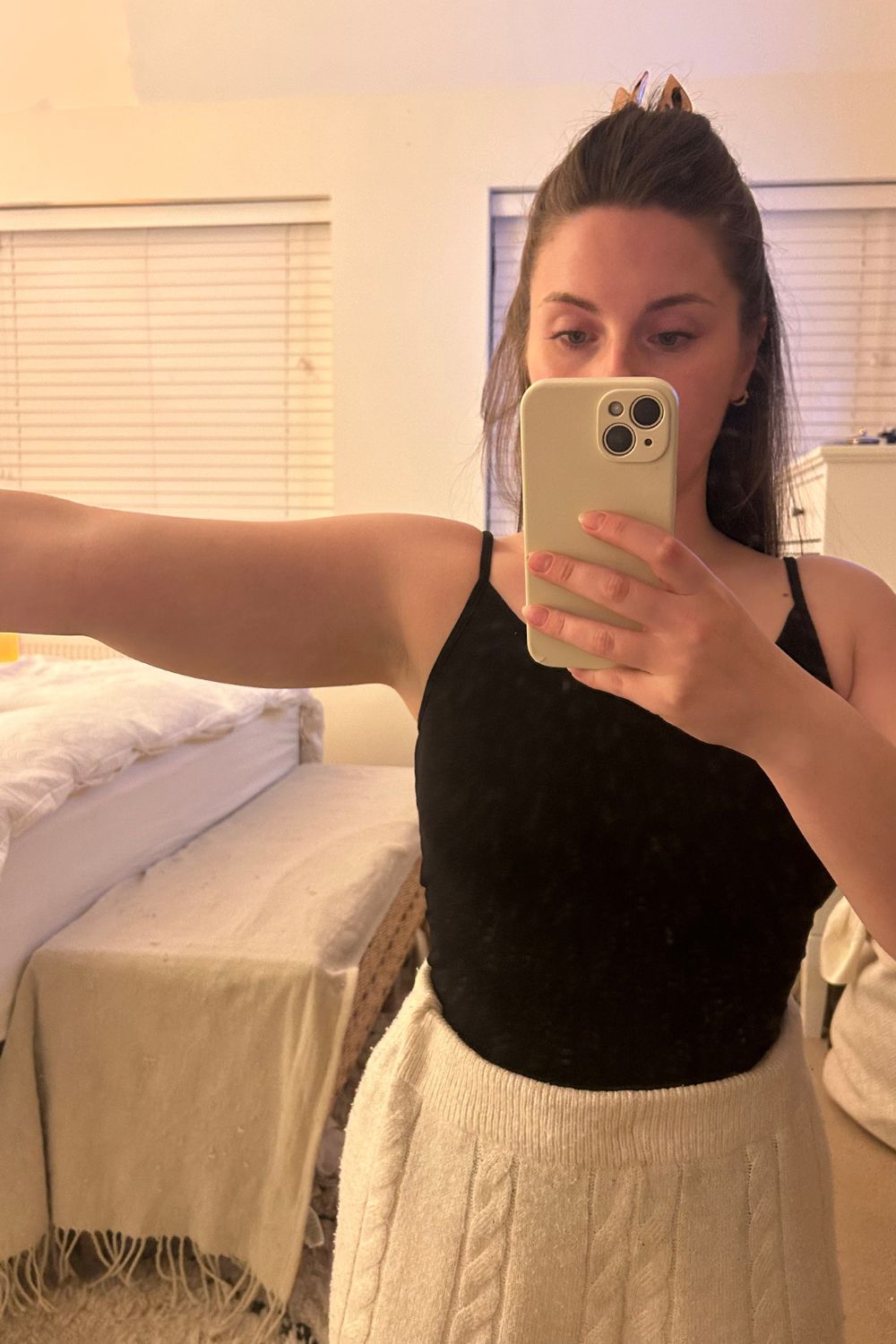
After Airsculpt
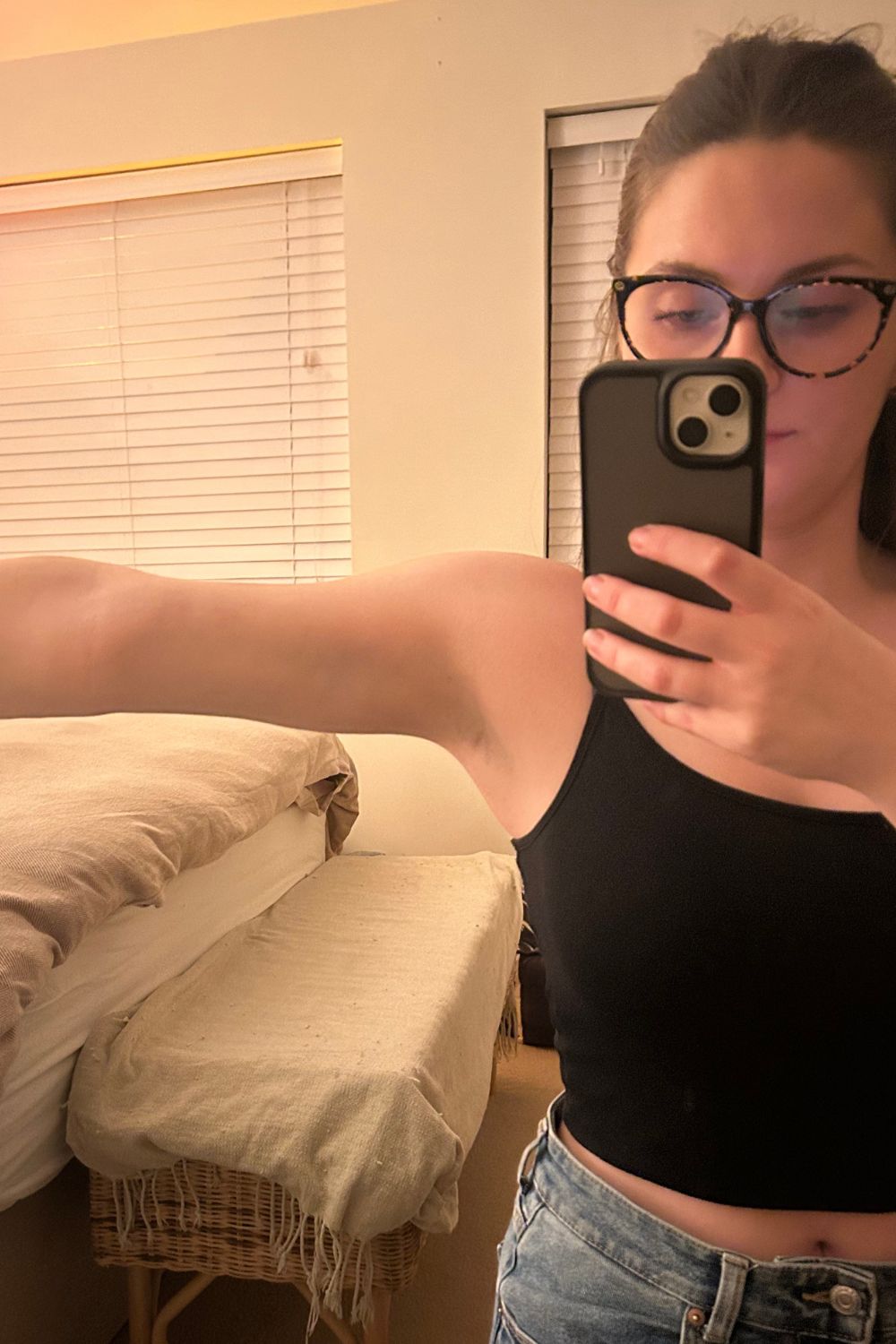
The procedure is done completely awake with only local anaesthetic used, hence the playlist. After numbing with something called an Airpen (essentially a pressured anaesthetic), a hole punch (this is not the medical term but it’s the best way I can describe it) is made on the incision sites. This felt a little stingy but wasn’t painful. Then the anaesthetic and fluid are pumped into the arms. This was sore and a very weird sensation; it also doubled the size of my arms, which was both hilarious and quite strange. This is done in both arms before the suction happens.
Then, the small cannula is used to start removing the fat. If you’re a grossly curious soul like me, you can watch the fat being removed—fascinating and pretty grim. The cannula plucks fat out gently and the machine doing so is pretty noisy as it vibrates. This isn’t painful as such but isn’t the most comfortable; I can only explain it like having a massage gun under the skin. I was chatting with Dr Tillo throughout, asking him all sorts of questions, so I wasn’t in any sort of pain that reduced my ability to chit-chat.
As the fat drained, I began to find myself so incredibly validated. Dr Tillo was surprised at the amount of fat I had stored in my arms. In fact, he told me it was triple the amount considered ‘normal’ for fat removal. I had 1.3 litres (yes, litres) of fat in my arms combined. A significant amount for someone of my size and frame. I wasn’t making it up in my head that my arms felt bigger, they actually were—quite significantly so.
Once the fat removal was complete, Dr Tillo started on Airsculpt +, which is skin tightening. Since I had so much fat removed, I opted for skin tightening to reduce the risk of loose skin. To put it into layman’s terms, Dr Tillo described the process as similar to when you put steak into a searing hot pan and it shrinks. This didn’t hurt but definitely felt odd.
Okay, now for the pain and intensity talk. It’s said to be painless and to be completely honest, I don’t agree. I have a high pain threshold and found some of it to be really uncomfortable. It was only painful a handful of times and I didn’t use as much gas and air as I had available (my own fault). I think it’s really down to the area being treated and what you consider to be painful. But is it completely painless? Absolutely not.
I'm also incredibly curious when it comes to medical procedures and, well, gore. So naturally I was curious to see the entire goings-on of the procedure. However, for those squeamish folk, I'm not sure how well they'd get on during the procedure. It's fairly intensive, and if you're not used to or interested in surgeries or minimally invasive procedures, this is something to seriously consider before going ahead.
The process took about an hour and a half in total, which considering the drastic immediate result, wasn’t that long.
Airsculpt recovery and aftercare
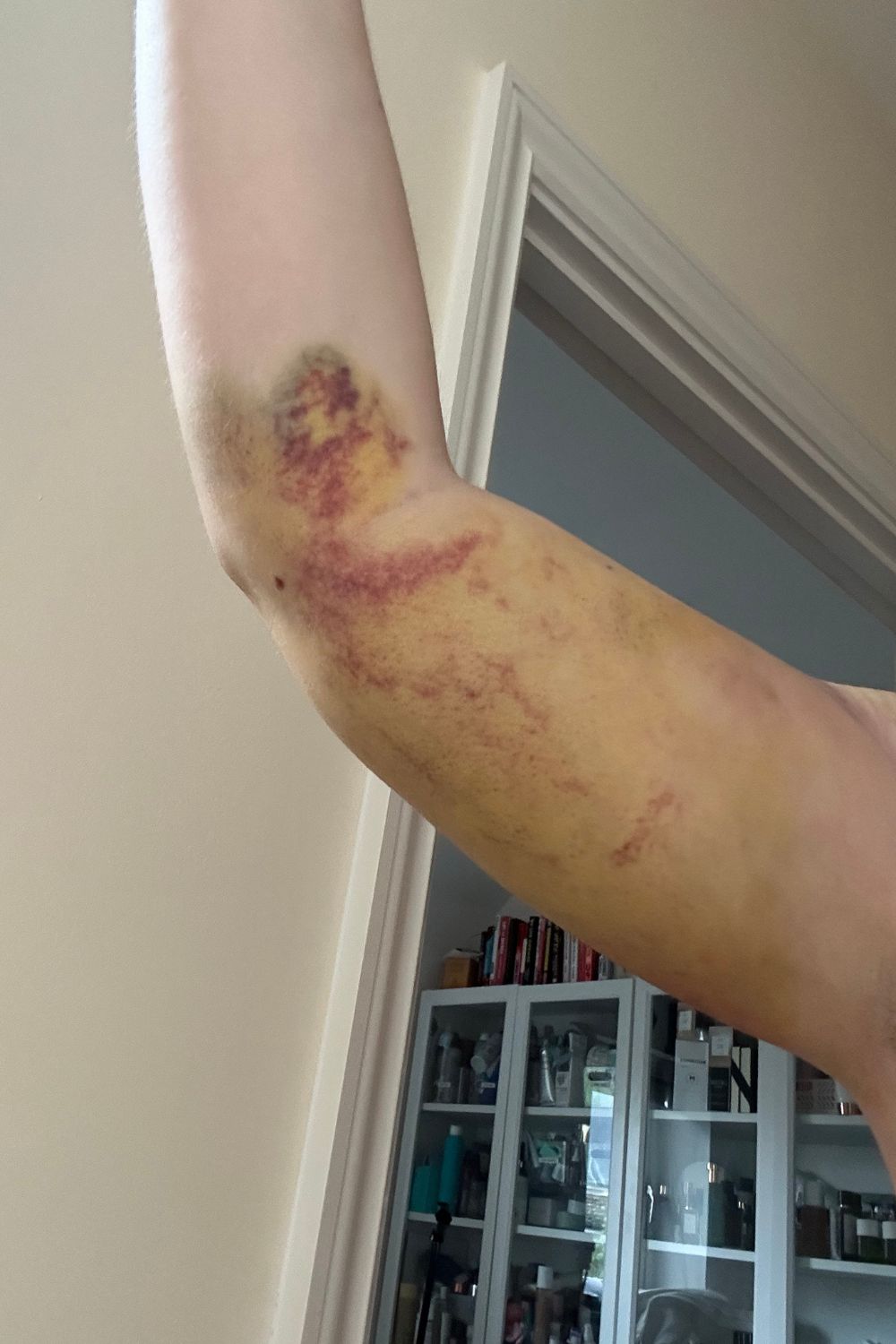
The downtime
Now, one of the main USPs of Airsculpt is the recovery time. The recovery time is stated as being 48 hours, which I both agree and disagree with—let me explain.
They say 48 hours is typical for feeling mostly back to normal and because you can return to work. This assumes your work isn’t labour-intensive. If you work an office job, even better, from home, then yes, you can return to work as early as the next day. If not, it’s more like a week's recovery.
The first 48 hours were pretty rough, I won’t lie. Mostly because I struggle sitting still. I felt completely fine immediately post-surgery and on the way home. I started to feel faint after changing the pads in my garment (to catch any fluid leakage) that afternoon. Thanks to my mum for helping with a fairly gruesome job.
That evening, I felt incredibly nauseous but this is likely due to coming on my period mere minutes before heading into theatre for my surgery (talk about great timing). I always feel incredibly sick during days 1 and 2 of my period and can barely eat, which isn’t ideal timing for recovery. So the sickness I felt, I put 80% down to my period. Nevertheless, on day 1 and 2 I mostly rested in bed and kept it easy. I walked at least 45 minutes a day from day 1, which helped my recovery hugely. I tried to continue running errands and attempted to drive but it was a no-no. I made myself spend day 2 in bed. By day 3, I was out and even went to the pub with friends that evening; I was definitely pale and a little bit faint, as well as not being much fun because I wasn’t drinking, but I felt good for getting out.
After one week, I felt mostly back to normal but had soreness and swelling when I walked. After two and a half weeks, I was fully back to normal with just a bit of soreness to touch where I had skin tightening. My final results take until I’m three months post-op, which is when all swelling and tenderness will be gone.
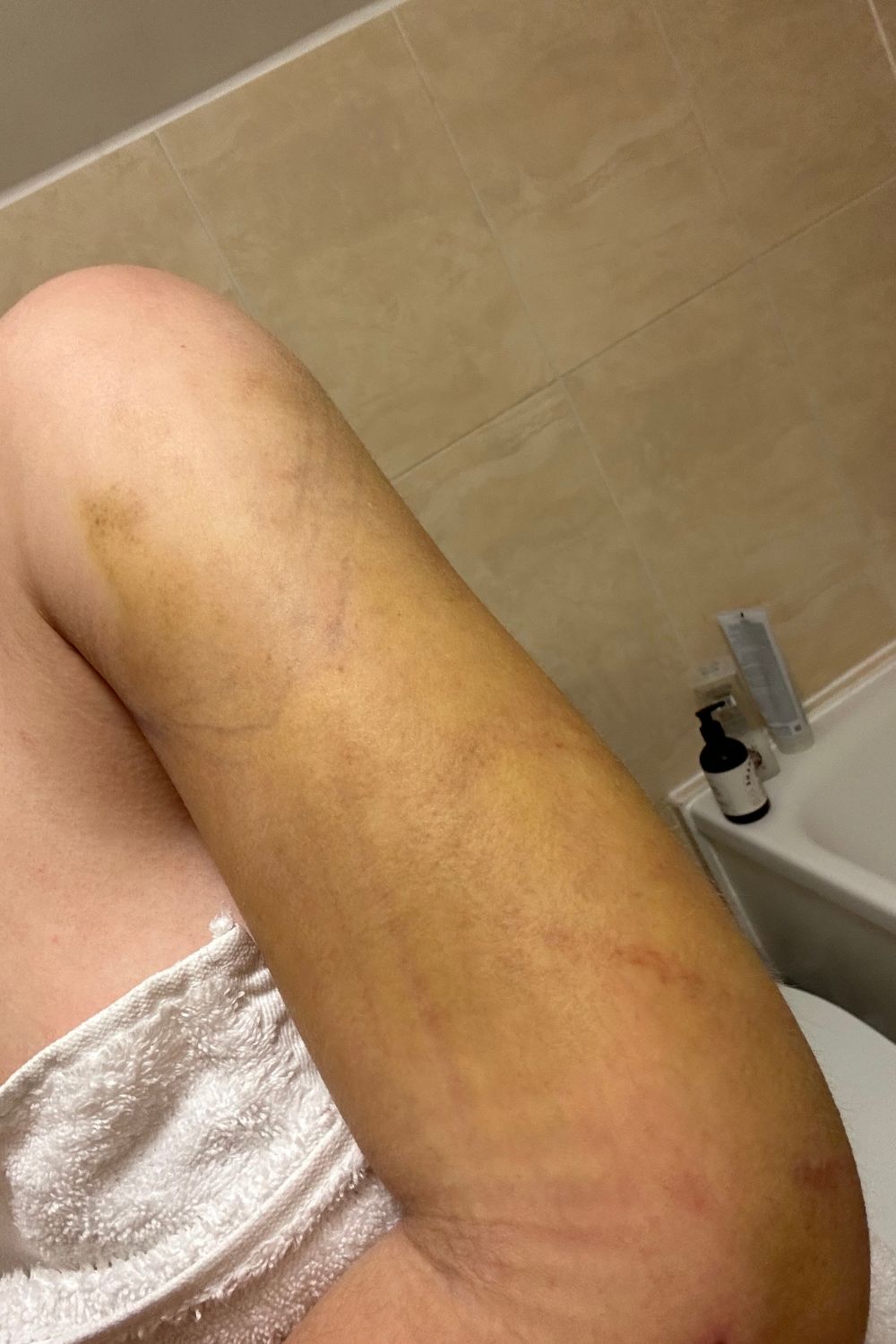
The bruising and swelling
I bruise like an absolute peach, which was absolutely the case here. My bruising looked far more severe than it felt. Despite looking horrific to begin with, my bruising had mostly cleared up within a week and was completely gone after two weeks. My incisions were completely healed after about 10 days and I’ve been using Epaderm Cream and Science of Skin Solution for Scars every day to help minimise any scarring.
The compression garment
A lot of people online I saw said the compression garment was the worst thing about the recovery. For the 24 hours I had fluid draining, I would agree because the padding absorbing the fluid was incredibly tight and uncomfortable. As soon as I was able to take those out, I found the garment absolutely fine. The worst part was finding time to wash and dry it quickly enough.
I wore it 24 hours a day for the first two weeks and then 12 hours a day for the following two weeks. After that, I wore it when working out and when I felt like I needed the support. It became a bit of a safety blanket for me and definitely felt more comfortable on than off.
Lymphatic drainage
Aside from the care taken during the procedure, I put a lot of my fast recovery down to investing in lymphatic drainage twice a week for the first three weeks and then once a week for the five weeks following that. My therapist used a deep oscillation machine to minimise bruising. It’s important you go to someone who is adequately trained for post-surgery. My therapist not only helped on a physical level, she was fantastic at reassuring me that my recovery was going well.
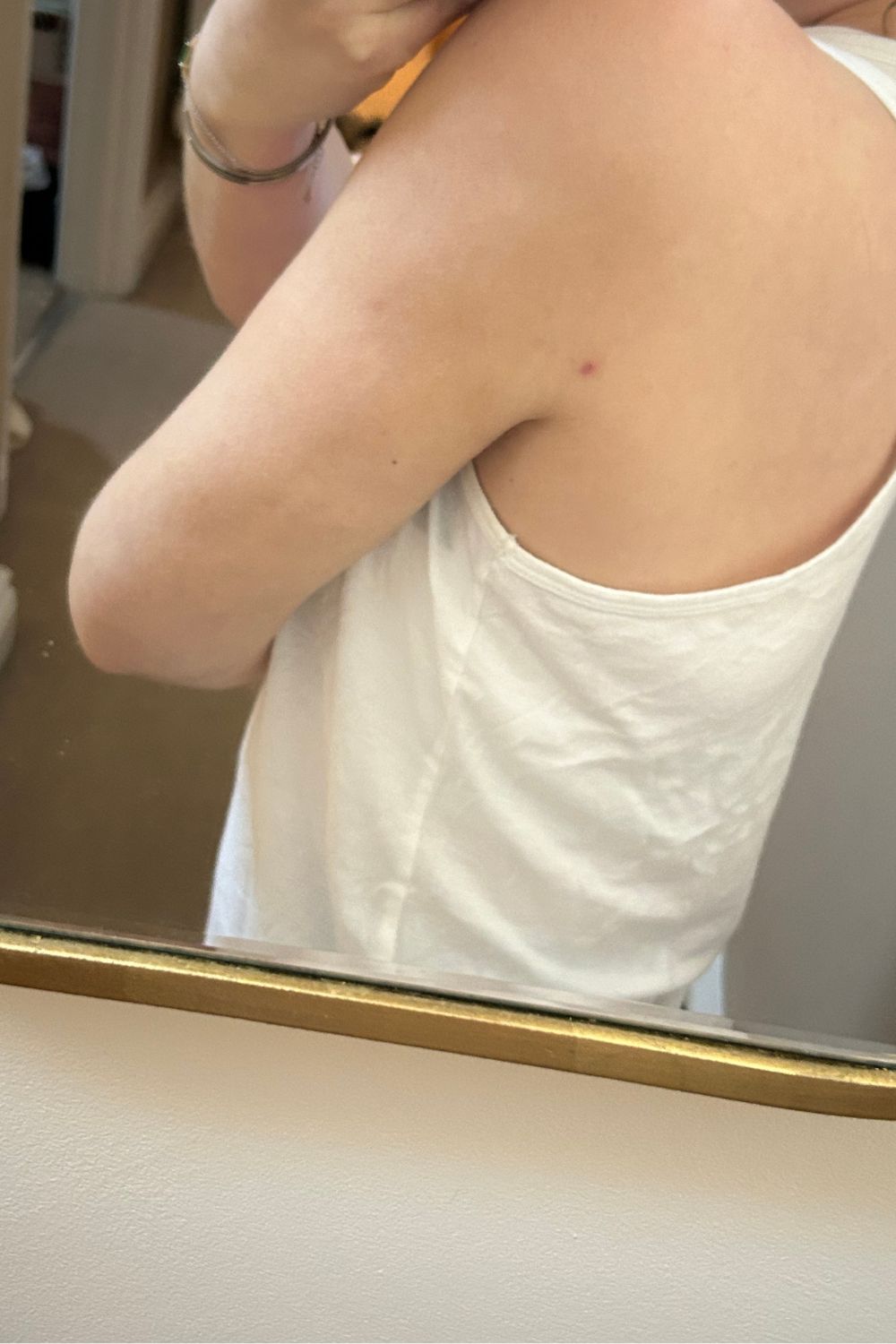
Airsculpt results
I can say with 100% certainty that this procedure was life-changing for me (along with masseter Botox).
Getting Airsculpt on my arms has completely changed my frame. For the first time in my life, clothes fit as they’re supposed to because I don't have to overcompensate for my arms and end up drowning myself in bigger clothes than my size. Another plus was that you can now actually see my arm muscles. I started flexing in the mirror (and to my other half at every given opportunity) like a teenage boy.
Costs for Airsculpt start at £8,000 (it depends on the area you get treated and any additional treatments you get like skin tightening), so it's not something to get on a whim. The higher cost is due to the significantly reduced recovery time and scarring. As someone who didn't want to be out of action long—especially after having so much time off from other medical procedures already this year—I think this higher price is worth it. I was back at the gym taking it easy after 2.5 weeks and fully back to my intense gym sessions by 4 weeks. With regular liposuction, you can typically go back to exercising after 4-6 weeks.
Airsculpt is not a weight loss solution, in my opinion. It’s a way of ridding stubborn fat that will never go away with exercise.
Before Airsculpt

After Airsculpt
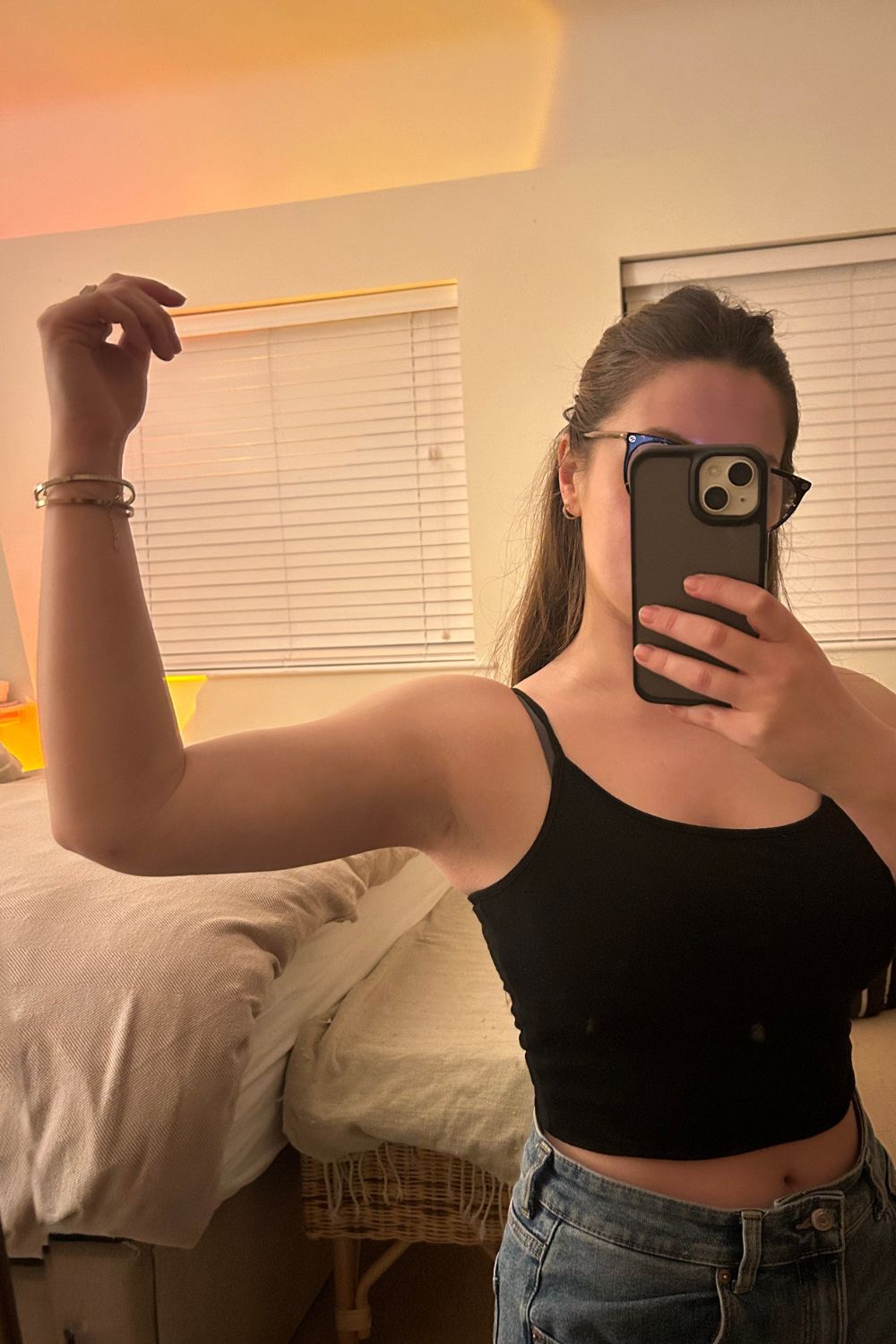
The best bit is that my results will continue to get better because I'm still in the recovery period. Watch this space for the update in the New Year.
Tori is a freelance beauty journalist and contributor for Marie Claire. She has written for various titles, including Allure, Glamour, Elle, Refinery29, Brides, and more. Currently training to be a nail tech, Tori is a total nail enthusiast and always has time to talk all things nail art. When she’s not writing about beauty and testing products, Tori can be found walking her rescue dog Pip, drinking great coffee, and eating as many croissants as humanly possible.
-
 How the slogan t-shirt became this season's must-have - and why it's more than just another trend
How the slogan t-shirt became this season's must-have - and why it's more than just another trendNot just another Nineties throwback
By Clementina Jackson
-
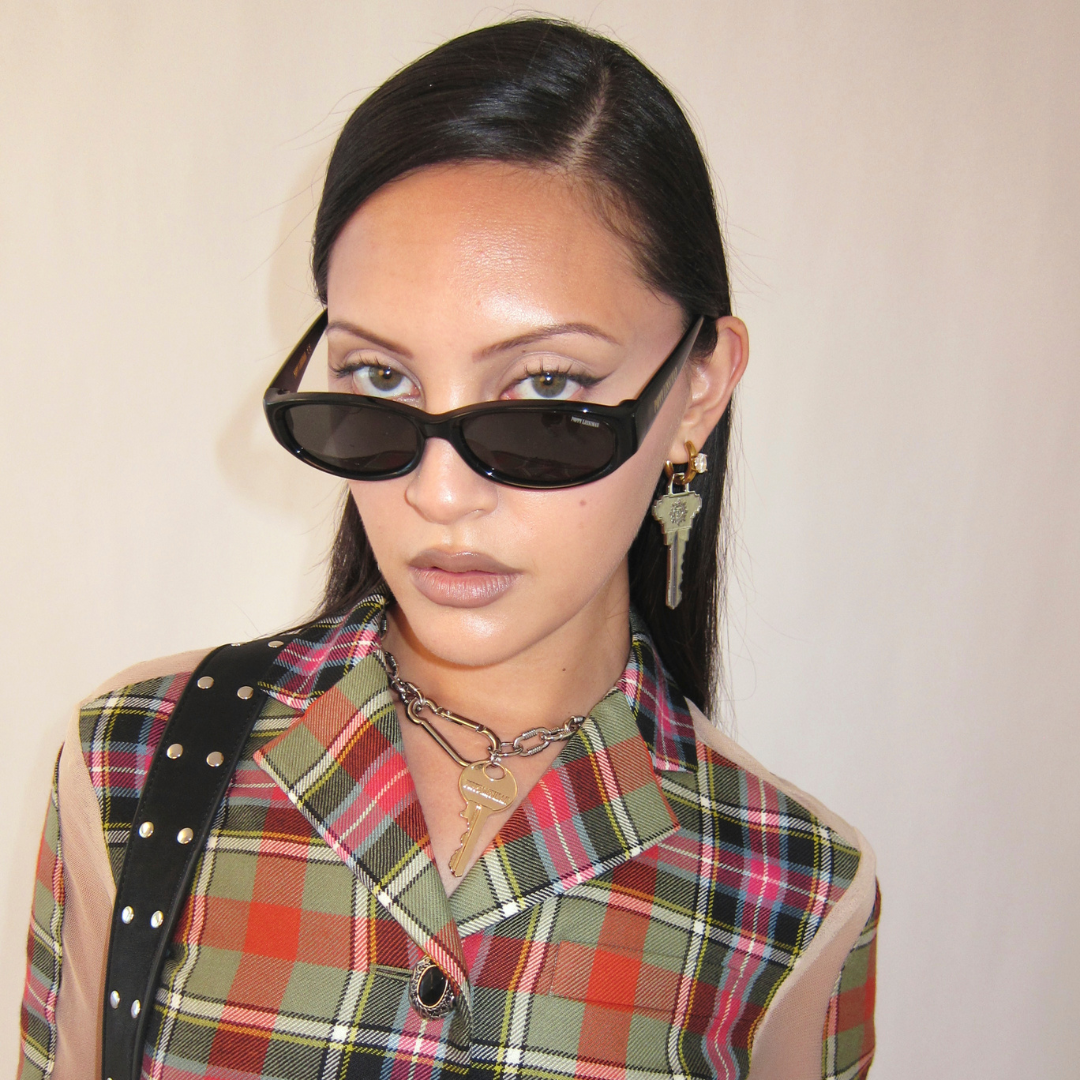 How are Trump’s tariffs affecting the fashion industry?
How are Trump’s tariffs affecting the fashion industry?The fluctuating situation in the US is having very real consequences
By Rebecca Jane Hill
-
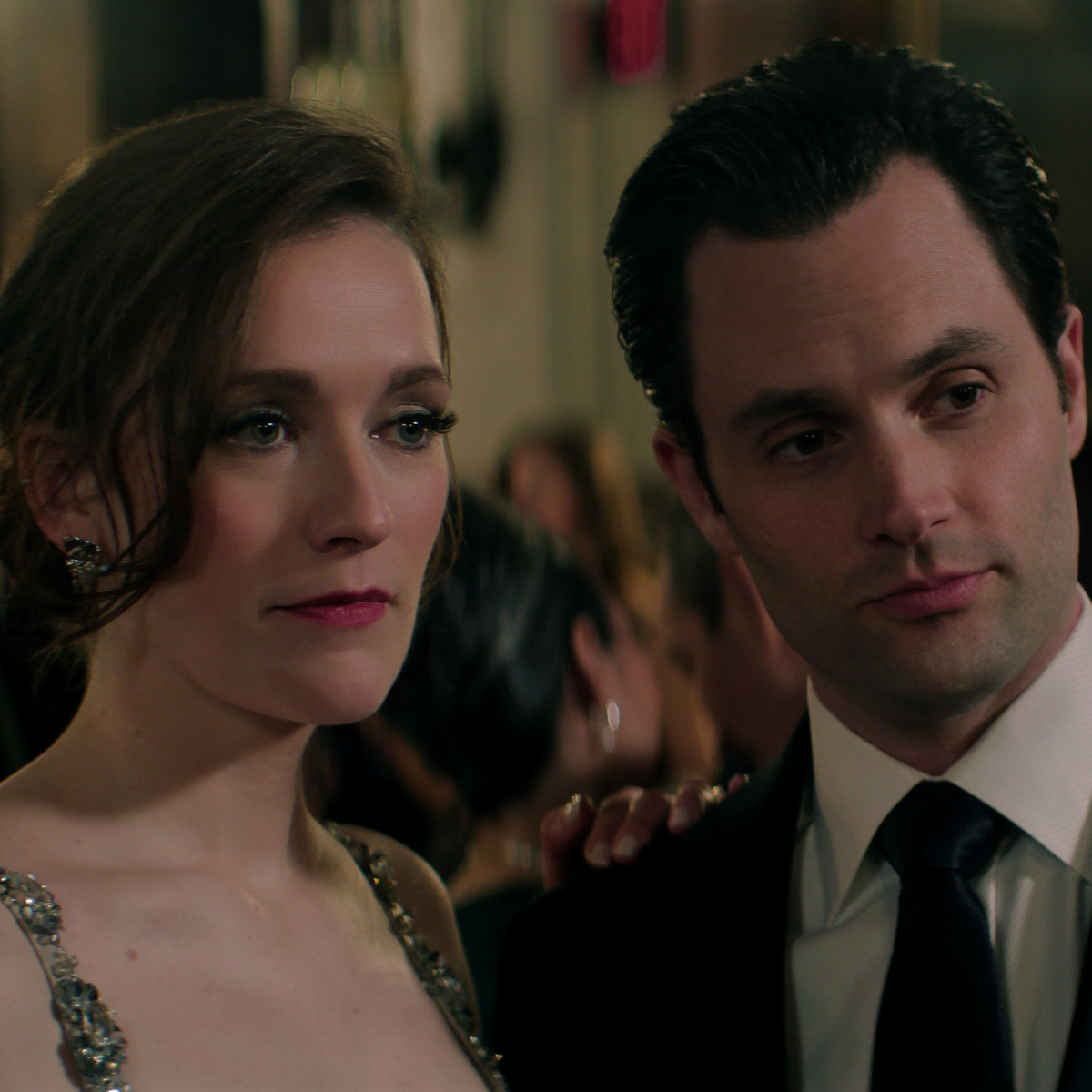 Here's every character returning for You season 5 - and what it might mean for Joe Goldberg's ending
Here's every character returning for You season 5 - and what it might mean for Joe Goldberg's endingBy Iris Goldsztajn